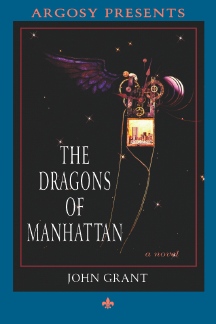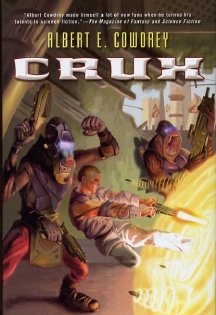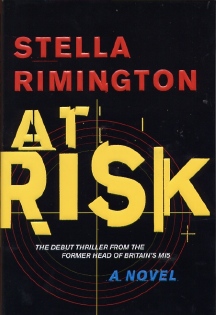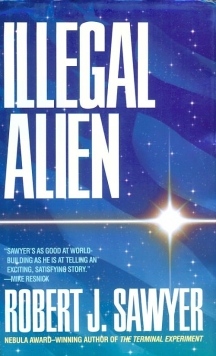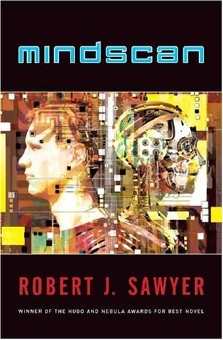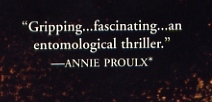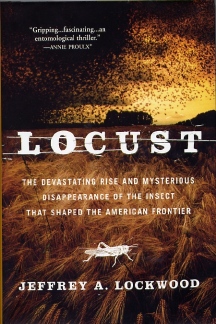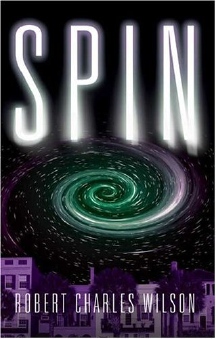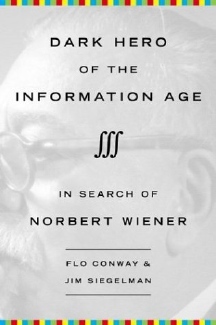|
|
|
This Just In...News from the Agony Column
|
12-17-04: A Preview of Argosy 3; Albert Cowdrey's 'Crux' of the Matter |
||||||
"Watch
the distribution"
Thankfully, Owen is alive and kicking. And so is Argosy. But the first issue pretty much did seem to get eaten. Hell, I never saw one, and I keep an eye peeled for that sort of thing. The only way I found one was because Owen kindly sent me one. The upshot of that is: if you should find one, snap it up. It's going to be a collector's item, to be sure, and that may increase the price. But when you can get yourself a magazine that has the wisdom to lead the first issue with a story by author Jeffrey Ford, especially a story as wonderful as 'A Night in The Tropics', you'd best snap it up immediately. Especially if it finishes with a novella by Michael Moorcock with more than a few political overtones titled 'The Mystery of the Texas Twister'. Moreover, every bit of design and the editorial attitude -- a faux-formal manned tone of voice that creeps into comments for the illustrations and the edge of the issue chatter -- is top-notch. So what can we expect from the third issue of Argosy? Having seen that the light at the end of the tunnel is a train, it has weathered more than a few delays. But Owen tells me it is coming out and offers cover art and contents as joyous evidence we'll once again be able to enjoy all the luxuries of a great fiction magazine, done, if possible, in even grander style. So how do you improve a magazine like Argosy? Well, you change distributors, for one thing. Argosy has always been intended to be a two-volume publication, sent in an illustrated slipcase. But their first distributor nixed that, and that's why the first issue I saw was crammed together. Mind, I do focus on content, but having seen a two volume issue, I'm convinced it's the way to go, and so is Owen. So the two volumes in a slipcase format is back. Owen tells me that, "in accordance with ARGOSY's being more 'bookish' in nature than 'periodicalish', we are changing the name from ARGOSY MAGAZINE to ARGOSY QUARTERLY."
Issue three is certainly more. The fiction lineup includes Jim Fusilli, Richard A. Lupoff, Zoran Zivkovic, Steve Rasnic Tem, Marly Youmans, Christopher Chambers, Chris Nakashima-Brown, and Charles Coleman Finlay. William F. Nolan contributes a long non-fiction feature on John Dillinger. The separated novella come from no less than John Grant, and is the first part of a massive satirical novel 'The Dragons of Manhattan'. The novel will be completed in the following two issues. With the departure of Lou Anders, Owen is opening up Argosy to a series of Guest editors. We should see a list coming soon, and I'm told it will include some surprises. One is confident that those will be good surprises. And as you get your own copies of Argosy with the inevitable requests to loan them to friends, remember to get them back. Watch the distribution. |
||||||
Do
Five-Armed Baboons Sell Hardcover Science Fiction?
Cowdrey got hi start as a writer back in 1971, when he drew on his doctorate in American History to write 'The Delta Engineers'. This title and 'Land's End'(1977) both document the history of the New Orleans Engineer District of the Army Corps of Engineers. These are the guys responsible for flood control, levees and floodwalls, which you might imagine are of no small importance in New Orleans. It's practically a floating city. The Army Corps of Engineers keeps it from drowning, which is to Cowdrey's advantage: he lives there. In 1979, he wrote 'City for a Nation, the Army Engineers and the Building of Washington DC 1790-1967;. OK, it's a mouthful, but readers of Kim Stanley Robinson's recent '40 Signs of Rain' will know the import and urgency of this task. The capital of our nation was built on a swamp that nobody wanted. Yes, it's still a swamp and by any other name, would smell as sweet. Cowdrey returned to the publishing world in 2002, when his short story 'Queen for a Day' won the World Fantasy Award. As readers know from my essay on awards, the World Fantasy Award I one definitely worth watching. And this novel certainly bears that out. 'Crux' first saw light as a novella published in The Magazine of Fantasy and Science Fiction. Interestingly enough, Gardener Dozois, the one-time editor of Asimov's, praises the version published in F&SF on the back cover blurb. Yes, we're a pretty small and shamelessly incestuous community. But then, remember -- we like mutants! OK, so for 'Crux', you look at that cover and think maybe: sub-Star Wars space opera. Yeah, I know, it probably takes some digging to get that low, but there you are. Five armed baboons, well -- they’re asymmetrical . So. Take a deep breath, and remember the days of Philip K. Dick. Because that's the vibe I get from this novel. How do you convey that on the cover. Typically, you go for a Blade Runner-esque painting. Having not yet read the book, I'll allow that there may actually be five-armed baboons inside. In fact, that's such a bizarre concept, I'm guessing there must be. But still. Still. Back to the Philip K. Dick vibe. The setup here is that Earth came close to wiping itself clean long ago. The survivors --both in Central Asia and on the moon -- bring it and the human race back to life. Now, we're thriving, in a golden age where Genghis Khan is revered as the uniter of humanity and democracy is a long-dead notion. When scientists create a wormhole generator that might allow trips to the past, a band of bleeding hearts and malcontents (read: libruls) decide that they've got to have this device to go back and prevent the Time of Troubles that shattered the earth. But those in control don’t want the past changed. And should it be? The future is pretty damn bright. Cowdrey does some interesting things with the language and plotting here, weaving together a future that's substantially different from what we'd expect and a past that we might not recognize. He's created a language for his future that reflects its strangeness. As a result, you get more than bread-and-butter prose. Some weirder. Wilder. 'Crux' looks to be another entry in what I called 'Time Opera', that is, big-scale far future novels that feature time travel as a, well, crux, around which the action revolves. Earlier this year, Neal Asher's 'Cowl' launched that sub-genre for me, though I suppose that were one to go back, say to H. G. Wells, it started earlier. That said, we have a novel that offers satire, strangeness and perhaps even five-armed baboons. The latter may not sell the novel, but Cowdrey's resume and the novel itself are a different matter. And if there's a future in which they're wielding weapons, there's probably a place where they're cooking fast food. And that's an even more frightening prospect. |
|
12-15-04: Robert J. Sawyer Goes in the Courtroom To Prove His Cases; 'Locust' by Jeffrey A. Lockwood |
||||||
Illegal
Science Fiction
I've read some very enthusiastic reviews of these books on websites and in publications I trust. But alas, it was the net.wit who posted a comparison in the rec.arts.sf.written newsgroup that stuck with me -- "A science fiction version of Mandingo". Sometimes, when you get something like that stuck in your brain, there's no getting it out, no matter what someone else says. And so the trilogy went unread, even as it garnered awards and occasional derision on Usenet. Sorry, I can't pretend to be objective, only honest about my subjectivity. Of course, other factors go into the mix as well. One of Sawyer's other recent novels is titled 'Calculating God'. When I see a title that implies some kind of religious inclination, I shy away immediately. I dunno -- it simply puts me off my read. And then finally, there are results of actual reading. Long ago, I read a Robert J. Sawyer novel titled 'Illegal Alien', and I found it rather thin. It was a courtroom drama -- with aliens. The premise was pretty simple. Aliens arrive, and they prove easy to talk to and easy to drag around. They're quickly touring the country, taking in the sights and becoming a sight themselves. While in Los Angeles, a human in the entourage is murdered, and all the evidence points to one of the aliens as the doer. From this point on, you can cue the OJ Simpson jokes. They pile up thick and fast as we get bits of alien DNA analysis and the perils of committing crimes in Southern California. I found the contemporary references tiresome, having read it shortly after it came out. In a world awash with OJ japes and jibes, that aspect grated on me. Interestingly enough, it won a Seiun Award for Best SF novel translated into Japanese in the same year that 'Hominids' won the Hugo for Best Novel. Perhaps it's an indication that there's room for more in the translation department.
But complications ensue when Karen's son sues her. It seems that he feels that he's been cheated out of his inheritance because now she's never going to kick the bucket. But it gets worse. How? Jake had apparently not quite got round to dying before he uploaded. His original hasn't gone the way of the dodo. He's up and escaped from the hospital and taken hostages, demanding the return of his identity, his personhood. All of a sudden, a potentially eternal romance has done and got itself all complicated by money-grubbing humans. Isn't that always the case? As usual, Sawyer plays on his strengths and those are considerable. He knows his stuff, and provides a couple of pages of further reading for those of us who'd like to cheat our kids out of their inheritances. He's also set up a nice round of hot button pushing for those of us who suffer from low blood sugar and an under-stressed lifestyle. And I'll have to give him props for writing short novels. The ARC I have is only 303 pages, though the back of the book spec indicates that the final product will be 384. And my experience suggests that one never knows what it will turn out to be. One thing is certain. Sawyer sells. He sells well. And controversy never hurts. |
||||||
An
American Plague
That's the mystery that Lockwood sets out to solve in 'Locust'. Here we have what the US Congress (well noted for reasonable scientific evaluations, of course) once called "The greatest single impediment to the settlement of this country". Now it's gone. Lockwood offers up descriptions of historical infestations and a history of our understanding of the American locust. He digs through the theories, largely uncontested until now, as to why they disappeared. Presumably, he deals with the obvious one, that is, that they all shed their skins and turned into politicians. Is there another hopeful extinction in our future? Nature has a way of dealing with excess, doesn't it? I'm really looking forward to digging into this book, as I've found that non-fiction is a positive boon for any fictional efforts one may care to undertake, as well as a palate cleanser between bouts of SF, horror, mystery and litrachur. I'll have to see if I can get a copy of the Sky Prawn Cookbook. Perhaps the locust's place as palate cleanser extends beyond the literary realm. Those who attend any gatherings I host may want to take note. Crispy snack trays may have more than just pork rinds. |
|
12-14-04: A Slow-Moving Apocalypse |
|||
'Spin'
by Robert Charles Wilson
One hopes that his prescience does not continue, because his forthcoming novel, 'Spin', (Tor Books / Tom Doherty Associates ; April, 2005 ; $25.95) ups the scale of events as it portrays a cosmic cataclysm. It begins with an event right out of arguably the most famous science fiction short story ever, 'The Nine Billion Names of God' by Sir Arthur C. Clarke. That's right. Here’s a novel that begins when the stars go out. How do you top that? Wilson's characters are ten years old when this happens, and it's called 'The Big Blackout'. But it's not just the stars that go out. The "sun" is no longer an astronomical object. It's a heat source. The moon is gone, though the tides remain. The artificial satellites that circle the earth fall from the sky. (Cue the Michael Bay special effects of satellites crashing to earth causing havoc.) Eventually, we do get something close enough to whatever is out there to determine that the barrier is artificial. Aliens --damn them! -- are at it again. Time is passing much faster outside the barrier than inside, and we soon come to realize that the actual sun is going to burn out in about forty years. But for the humans beneath all this action, life goes on. On one hand, we have Jason, a young scientist working against the slow-motion apocalypse. (No, Rob, it's not the Nibiruan apocalypse. From what I can see.) Diane pursues a life of hedonism, and marries the head of a sinister cult that's forged a religion out of the fears of the masses. Presumably, somebody somewhere declares a War on Astronomical Events. And of course, things get stranger. Robert Charles Wilson will be touring with Robert J. Sawyer next year -- a "Rolling Canadian Science Fiction Writers". As details emerge, I'll keep my readers informed. I'm going to have to tie myself to the mast to prevent reading this novel before its time. Hopefully, when that time arrives, Wilson will have himself a best seller on his hand. And one more fervently hopes that Wilson's prescient phase has passed. If not, it's time to invest in telescope companies! And telescopes. Really big telescopes. If this slow-motion apocalypse is on the roll, I want to be the first see it. Of course, there are any number of slow-motion apocalypses on the roll. Just take your apocalyptic pick. |
|
12-13-04: Norbert Wiener Founds Cybernetics |
|||
'Dark Hero of the Information Age' by Flo Conway and Jim Siegelman
Wiener was a child prodigy who was in college in the 1906, at the age of 11. By the age of 18, he had his PhD and more than a few problems. And most of the twentieth century was still to come. Science fiction readers have all grown up on the stories of his students and followers -- from John Von Neumann to Margaret Mead. His bestselling book 'Cybernetics' defined the field in fact and looms over the most of the fiction we currently hold dearest. Flo Conway and Jim Seigelman had access both to newly declassified WW II and Cold War-era documents and Wiener's family and closest colleagues. From his high-pressure childhood ("My children are not geniuses," his father once said) to his groundbreaking conceptualizations, the authors bring light to the man whose work provided the underpinnings for his future -- and our present. Wiener was not a glassy-eyed optimist. "We were here in the presence of another social potentiality of unheard-of importance for good and evil," he wrote in 1948 -- when Orwell was penning 1984. "The automatic factory and the assembly line without human agents...makes the metaphorical dominance of the machines...a most immediate and non-metaphorical problem. It gives the human race a new and most effective collection of mechanical slaves to perform its labor. Such mechanical labor has most of the economic properties of slave labor...However, any labor that accepts the conditions of competition with slave labor accepts the conditions of slave labor, and is essentially slave labor." And here we are. Pass the sweatshop. Please. Were you to want to know where our journey started, you'd be well advised to look into Siegelman's and Conway's biography. We certainly haven’t ended up where he might have predicted we would. But there's solid evidence that the prediction helped to prevent itself from coming to pass. To my mind, that's job number one for the dystopian writer: to accurately describe an horrific future, thus ensuring that it never arrives. |

